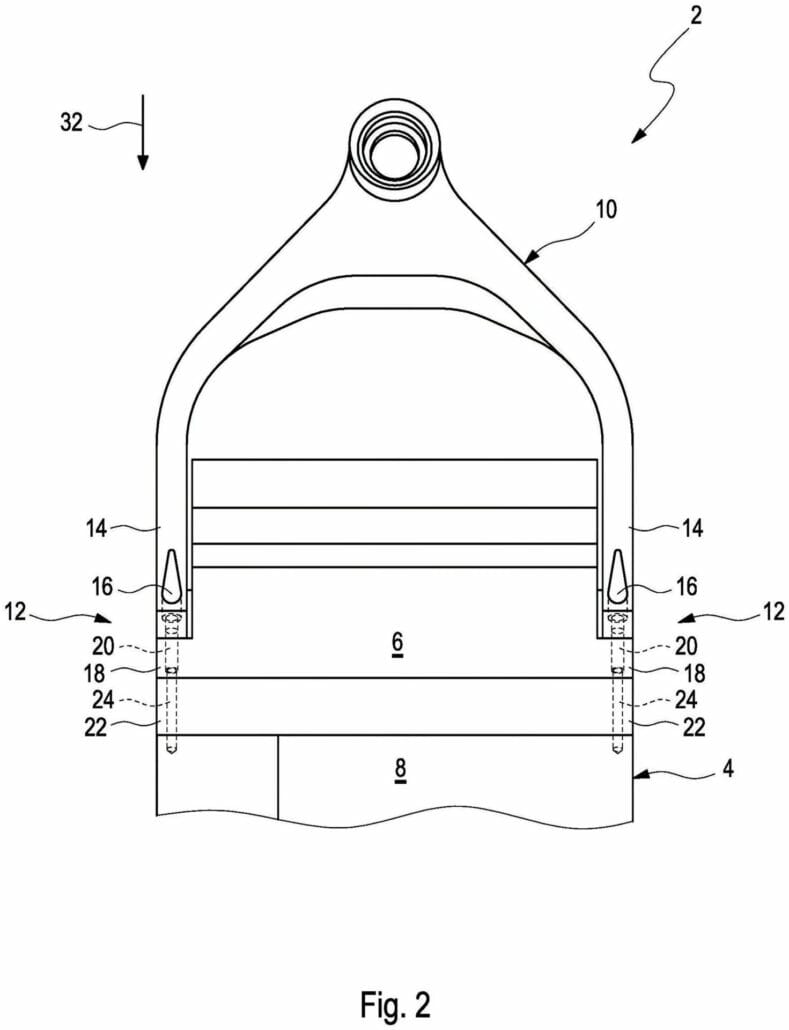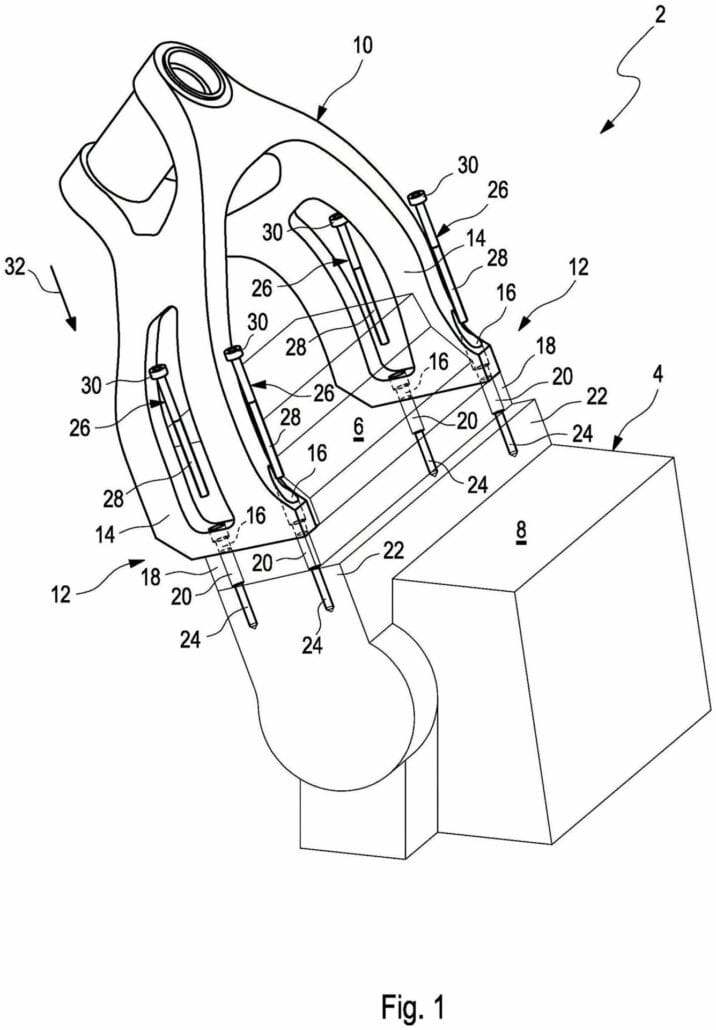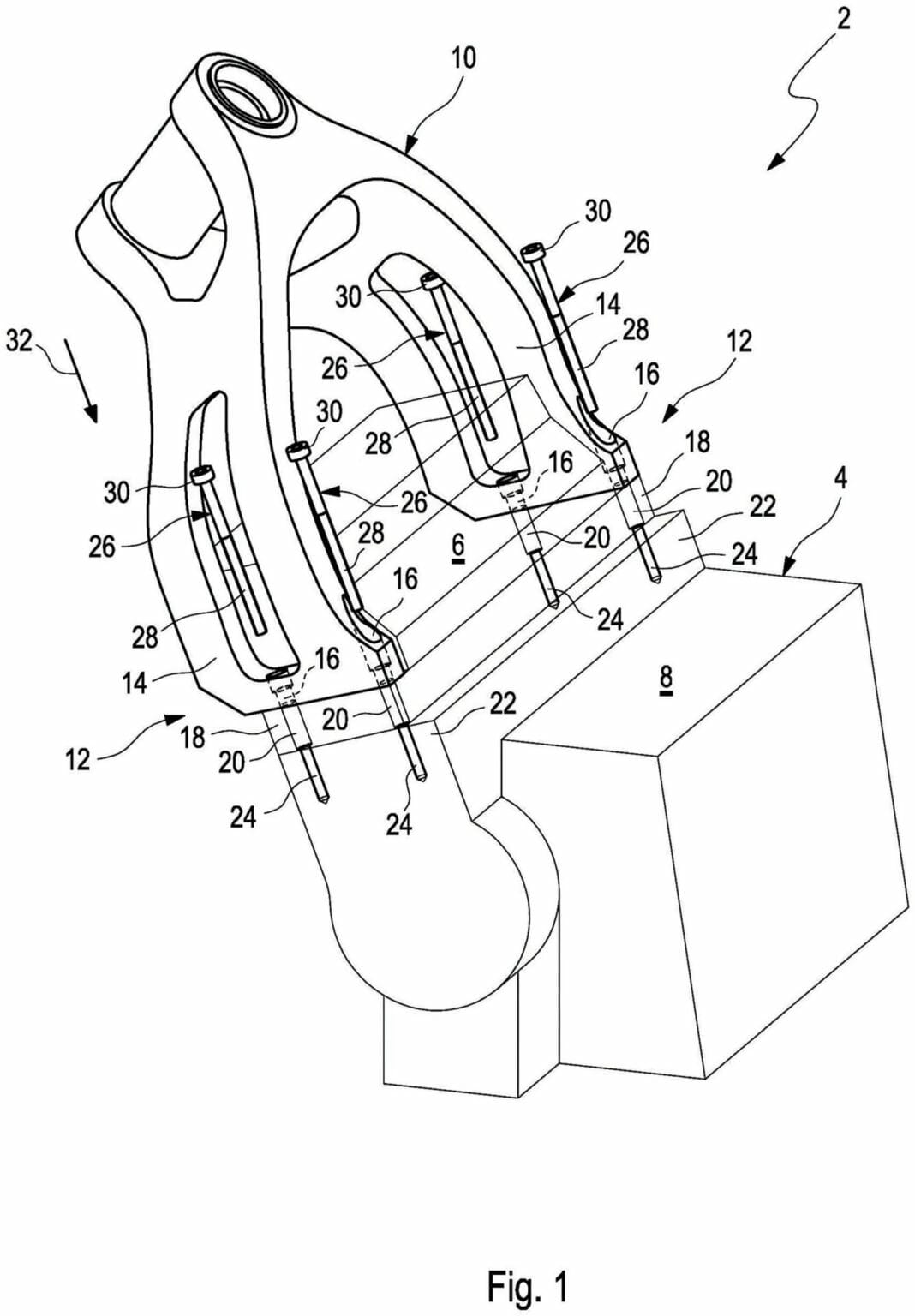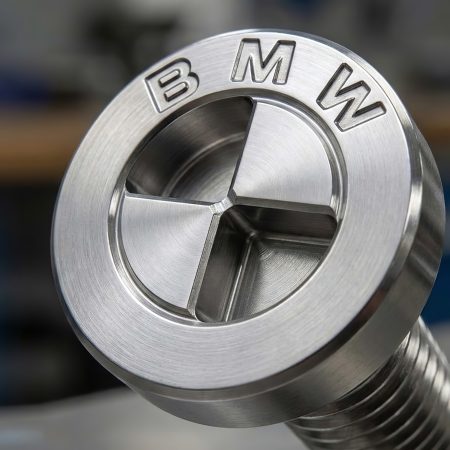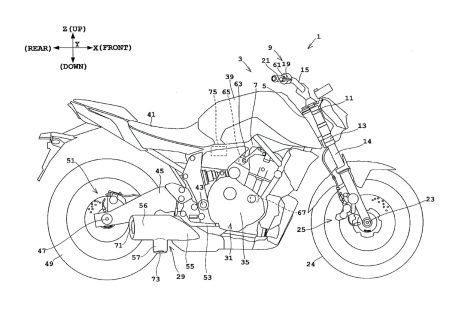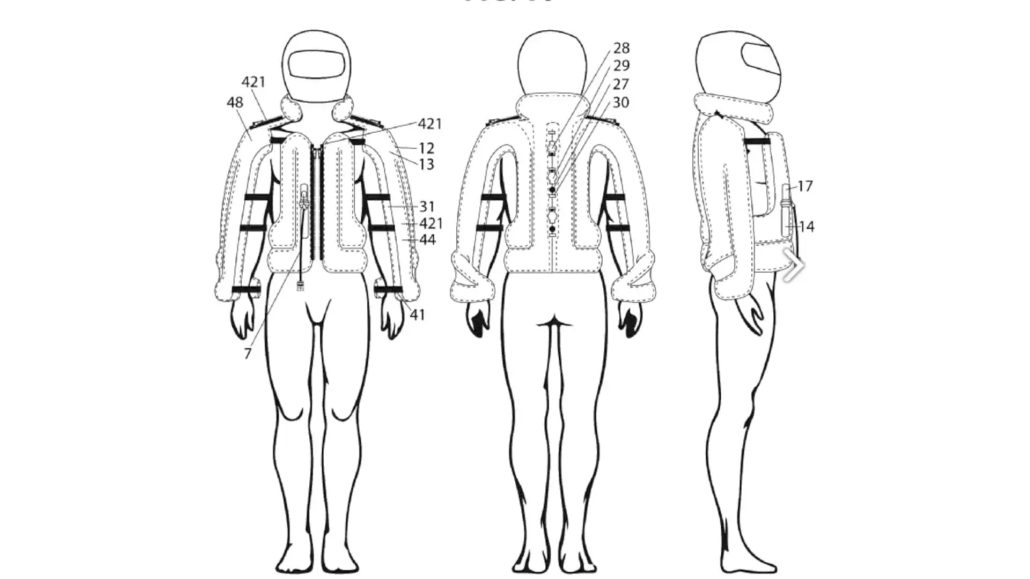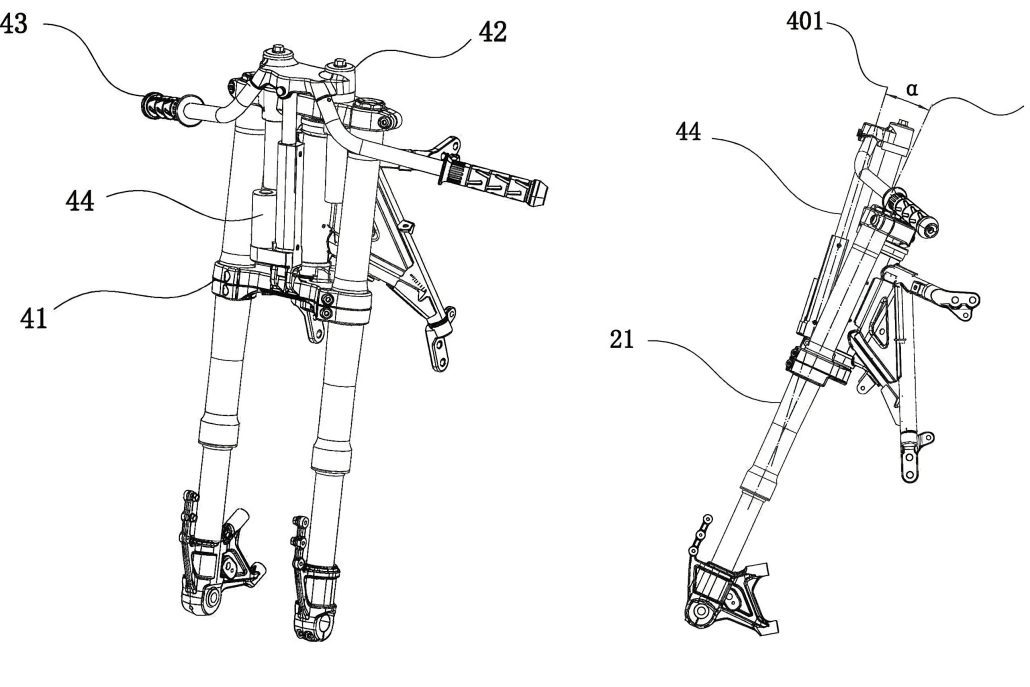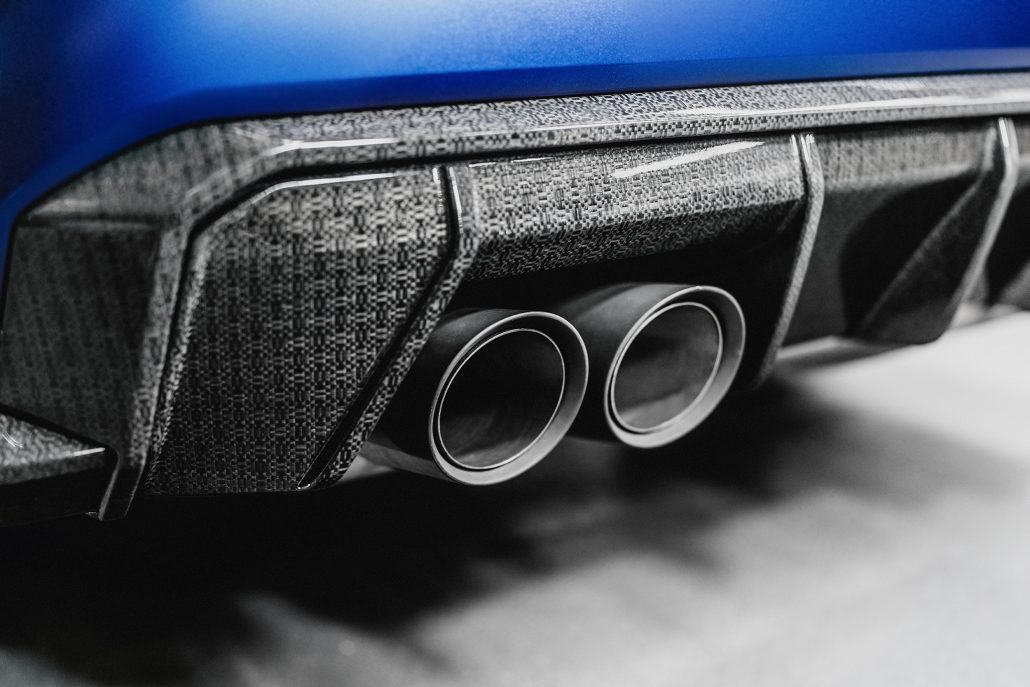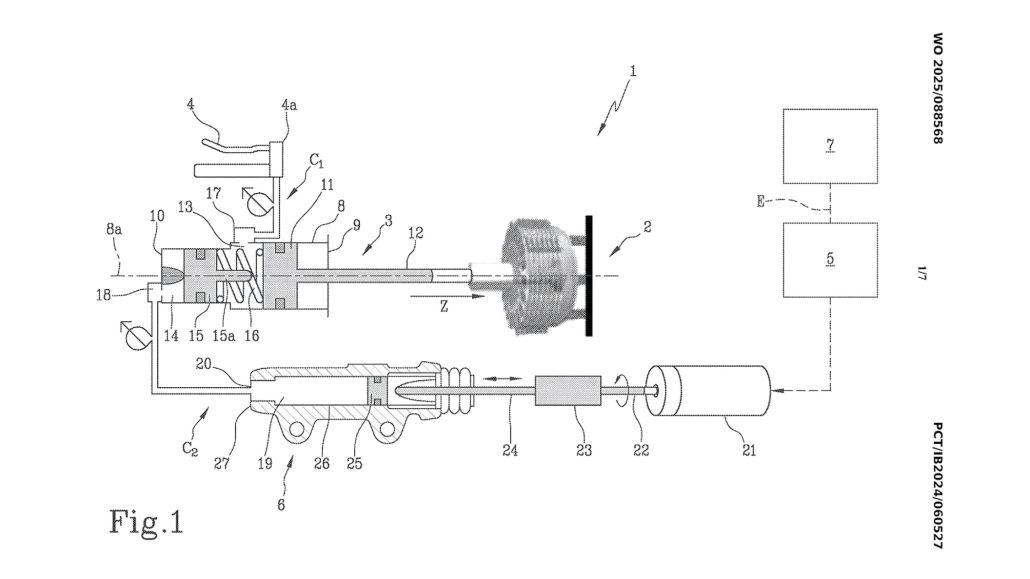Reinterpretation of the frame design
Unlike conventional designs, which use a steel or aluminum structure around the engine to connect the steering head to the swingarm mount, BMW’s new concept features a simple cast front structure attached directly to the engine. It provides a direct connection to the steering head and allows the swingarm to pivot directly on the transmission. Here, the engine serves as the main structure. This design is reminiscent of Ducati’s Panigale models, where the engine also serves as the main structure. However, BMW takes it a step further by using the cylinder head bolts to attach the frame to the engine.
BMW frame
The advantages of this design are obvious: by directly connecting the cylinders to the half frame, forces are transmitted in a straight line from one end of the motorcycle to the other. This not only reduces the number of components and the weight of the motorcycle, but also minimizes the width – a typical weak point of motorcycles with transversely mounted in-line engines.
Focus on width reduction
Until now, V-two and V-four engines have led the way in terms of width, which has brought aerodynamic advantages, among other benefits. BMW’s design could combine the best of both worlds and allow for a narrow motorcycle with the lower cost of an inline engine.
Three- or four-cylinder engines in sight
The BMW patent also suggests that the new frame design could be designed around a three- or four-cylinder engine. While BMW already has a wide range of four-cylinder engines, such as those found in the S 1000 RR, a three-cylinder would be narrower. While there have been three-cylinder BMWs in the past, such as the K75, it has been decades since a three-cylinder was in the BMW motorcycle lineup.
Looking back at the three-cylinder experiments
The company has experimented with three-cylinder motorcycles in the recent past. Among the best known is the MotoGP project, discontinued in the early 2000s, in which BMW used a 3,000-cubic-inch V-ten engine from Formula One as a base. Three cylinders of that engine came very close to the 990 cubic centimeter MotoGP capacity limit of the time, so BMW went in that direction. Although a motorcycle was built and also tested, the project was eventually abandoned.
Rumors and speculation
Since then, rumors of a three-cylinder sports bike from BMW have persisted. Speculation keeps surfacing on the Internet that a smaller machine – perhaps an S 675 RR – could be in development, but without solid evidence. This patent, with its specific mention of a three-cylinder engine, could be the first real indication that such a bike was actually being considered.
However, it’s often a long road from filing a patent to bringing a product to market, and there’s no guarantee that a patent will make it into mass production, either. So whether and when we will see a BMW three-cylinder on the road remains to be seen.
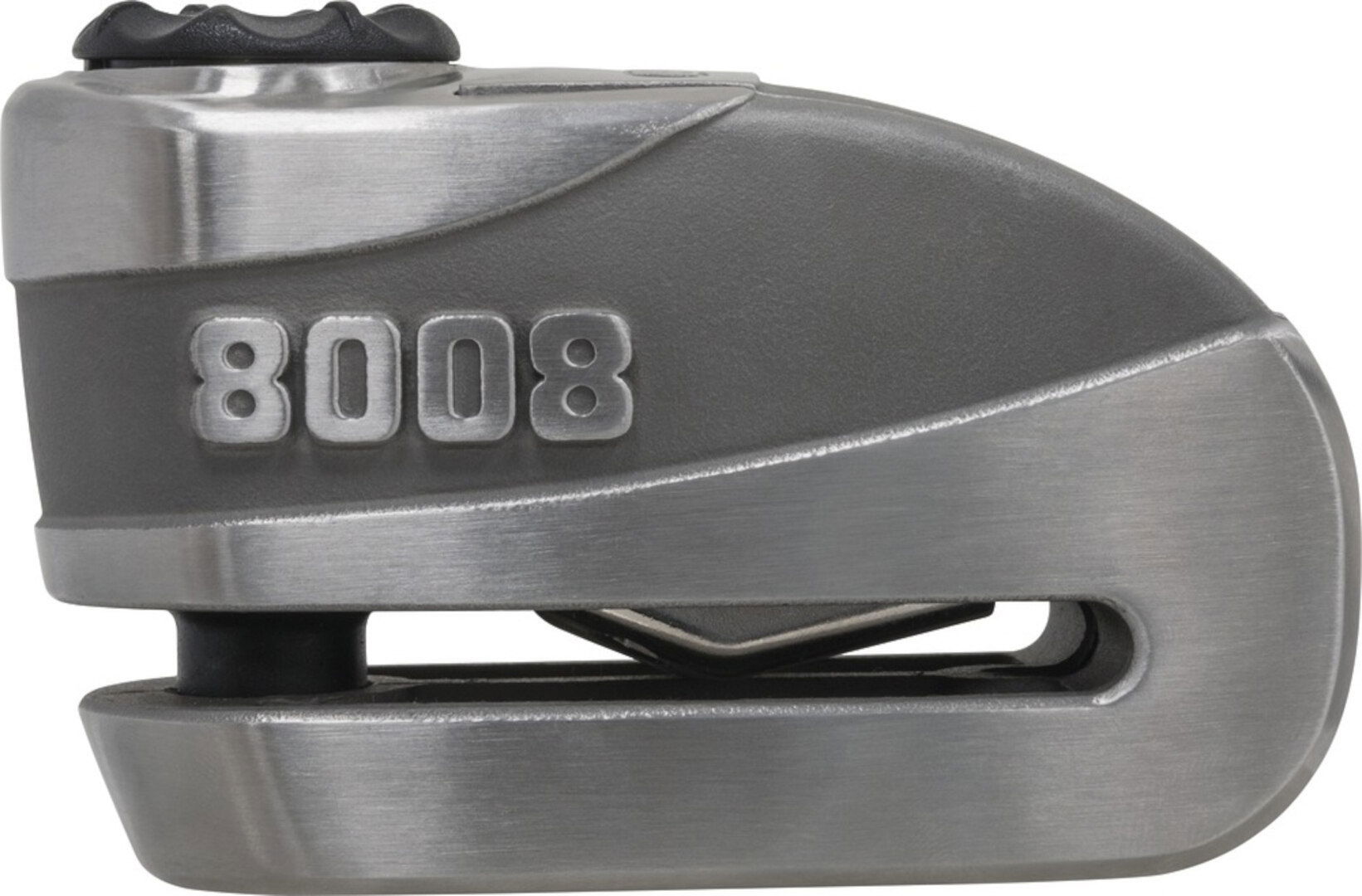

- Abus 10079270-01Abus Granit Detecto XPlus 8008 2.0, Alarm-Bremsscheibenschloss - Silber male
